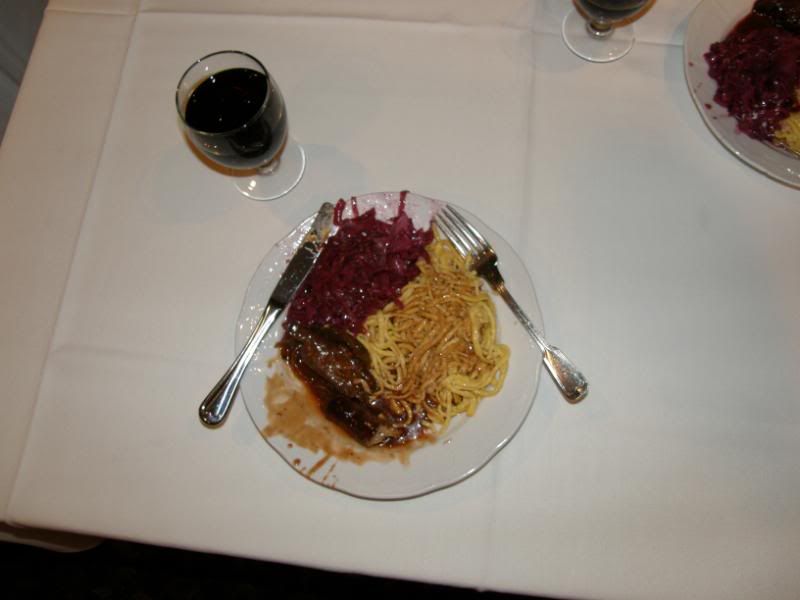Tonight I cooked traditional beef rouladen for dinner:
Variations on rouladen go back to the 16th century, according to Colonial Williamsburg; in Britain stuffed rolled beef was known as "beef olives" from their shape. German rouladen goes back at least to the early 18th century, and settlers from Bavaria may have brought it with them to the colonies. That is speculation, of course, but when the result is this good, few will argue too hard.
Take thin slices of beef, top or bottom round about 1/4" thick, tenderize them with a mallet, and paint them with Dijon mustard. Place a strip of bacon on each, add a sliced gherkin or mild dill pickle and a wedge of onion, roll up, and secure the roll with a skewer or toothpick. Brown in a deep skillet with a small bit of fat; goose fat is best. Set aside.
Add half a bottle of strong red wine to an equal amount of beef stock in the skillet. Put in a chopped carrot, fresh thyme, 4 cloves of garlic, 5-6 bay leaves, a pinch of ginger, and a pinch of salt. Bring the liquid to a boil, add the beef rolls back in, and simmer over a lower heat for 45 minutes to an hour, adding more wine as necessary (just save a glass for the cook).
After the meat is tender and the liquid is reduced, take out the rouladen. Add a tablespoon of tomato paste or a bit more, thicken as necessary with a bit of flour or corn starch, and strain the sauce.
Plate the rouladen and pour sauce over them.
Serve with Spätzle and perhaps cucumber salad, or with asparagus or string beans.
Here's a photo from another occasion, this time made with a side of red cabbage:


No comments:
Post a Comment